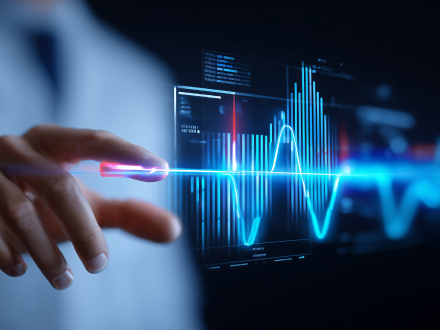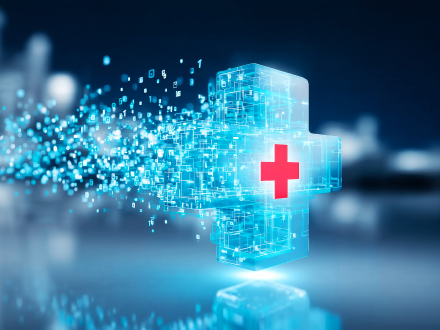Your message has been sent.
We’ll process your request and contact you back as soon as possible.
The form has been successfully submitted.
Please find further information in your mailbox.


Recently published data has highlighted a troubling reality: clinical misdiagnosis is directly linked to 10% of patient fatalities and 17% of complications. This presents a big question: which strategies can healthcare providers realistically employ to bolster the accuracy of diagnosis?
AI’s influence goes far beyond diagnostic precision; it’s reshaping the entire healthcare sector as we know it. Thanks to AI-driven solutions, healthcare providers can optimize resource allocation, streamline workflows, and elevate the standard of care on a global scale. From expediting diagnosis to tailoring personalized treatment plans, AI is unlocking new frontiers in healthcare delivery, where each decision is data-driven and every patient receives the tailored attention they deserve – and need. Plus, the industry is gathering speed: the global AI in healthcare market is projected to reach a value of $7.3 billion by 2028 – a staggering compound annual growth rate (CAGR) of 39.6%. That being said, these numbers are from 2022 – and since AI opportunities are growing every day, the real, updated figure is likely to be much higher.
At Innowise, we’re at the forefront of this revolution. By immersing ourselves in vast seas of patient data, we equip healthcare professionals with state-of-the-art tools which meticulously analyze intricate patterns, detect subtle anomalies with precision and speed, and even forecast disease trajectories with a level of accuracy that far surpasses human capabilities.
This tech goes above and beyond a revised approach to boosting patient outcomes: it’s about fundamentally reshaping the crux of healthcare delivery, optimizing resource allocation, and paving the way for a new era of personalized medicine.
AI-driven tools are entirely remodeling the way healthcare professionals approach medical diagnostics. From offering unprecedented accuracy and efficiency to streamlining clinical workflows, AI’s integration into pathology and predictive diagnostics is completely redefining medical practices and pathways to patient care.
Artificial intelligence uses patient data to preemptively forecast potential health risks – shaking up the concept of proactive healthcare. Through rigorous analysis of vast datasets, AI algorithms anticipate disease onset, identify early indicators, and tailor risk assessments, enabling timely interventions.





Anastasia Ilkevich
Healthtech Expert at Innowise
Advanced care systems with robust infrastructure – think high-speed internet connectivity, digital health records, and interoperable systems – are far better positioned to integrate AI solutions. On the other side of the coin, regions with a limited technological infrastructure may face challenges in deploying AI-driven diagnostic tools effectively. Take North America, for example: this region is projected to dominate the AI diagnostics market in the near future due to its well-established healthcare infrastructure.

Anastasia Ilkevich
Healthtech Expert at Innowise

Rate this article:
4.8/5 (45 reviews)












Your message has been sent.
We’ll process your request and contact you back as soon as possible.

By signing up you agree to our Privacy Policy, including the use of cookies and transfer of your personal information.